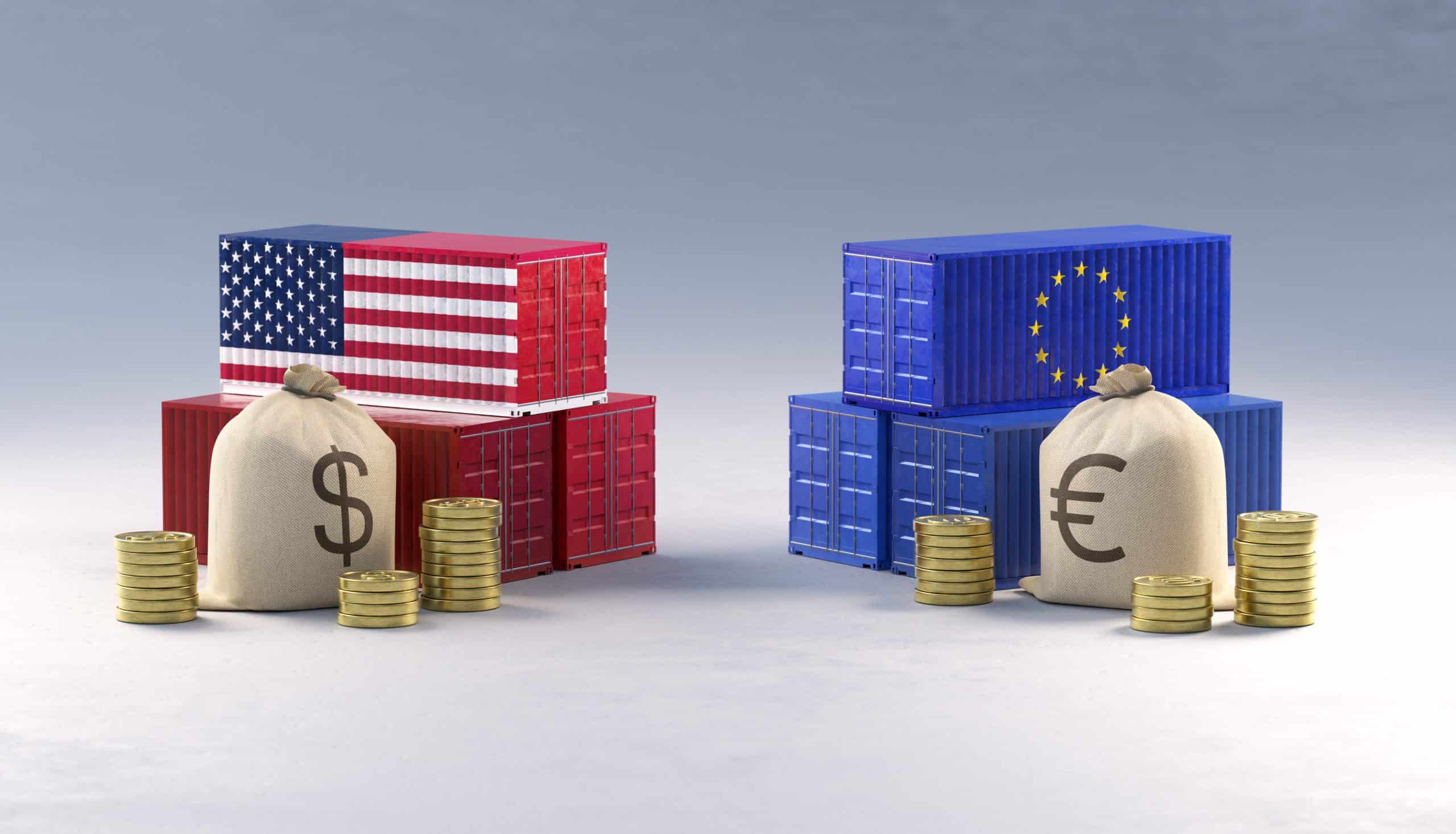Trump EU tariffs 2025: What you need to know now


The Trump EU tariffs 2025 are reshaping the way trade works between the United States and the European Union. These tariffs are more than just taxes—they represent a shift in economic policy that could affect prices, businesses, and political ties.
If you want to understand how these changes might impact you, keep reading.
As these tariffs take effect, both consumers and companies will need to navigate a new landscape filled with challenges and opportunities. The evolving trade environment calls for awareness and adaptability from everyone involved.
Overview of Trump EU tariffs
The Trump EU tariffs 2025 involve targeted taxes imposed on a range of European goods entering the U.S. market.
These tariffs serve as tools to protect American industries and address ongoing trade imbalances between the two economic powers.
Understanding the scope and intention behind these tariffs is vital for businesses and consumers alike, as their ripple effects touch multiple sectors and everyday life.
What Are Trump EU Tariffs?
Essentially, these tariffs are additional costs levied on imported products from the European Union.
By increasing the price of certain goods, the policy aims to give American manufacturers a competitive advantage while pushing for fairer trade terms.
Key Tariffs Implemented
The tariffs cover crucial sectors, such as:
- Automobiles and auto parts: Taxes on European cars and components increase manufacturing costs and retail prices.
- Agricultural products like wine and cheese: Affecting imports that are staples in the EU’s export economy.
- Steel and aluminum imports: Designed to bolster U.S. domestic metal industries.
Each affected industry experiences unique challenges, and the consequences extend beyond direct costs to influence employment and consumer options.
Impact on Businesses
Businesses that import or export goods between the U.S. and EU must now reevaluate strategies in response to the tariffs. While some American manufacturers may see less foreign competition, others could face rising input costs.
- Domestic manufacturers may benefit from tariffs reducing European competition.
- Import-reliant companies could see their costs increase, squeezing margins.
- Small businesses, with tighter budgets, are especially vulnerable to price shifts and supply chain disruptions.
Moreover, retaliatory tariffs from the EU can complicate international trade further, demanding agility and strategic planning from companies.
Consumer Effects
The effects of these tariffs are not limited to businesses; they also trickle down to consumers. As businesses face increased costs, these can be passed on to the consumer in the form of higher prices for goods.
This can change consumer behavior, as shoppers may seek alternatives or reduce spending overall.
Being aware of these potential outcomes can empower consumers to make informed decisions in the marketplace.
Key sectors affected by tariffs
Several key sectors are affected by the Trump EU tariffs, leading to significant changes in how these industries operate. Understanding these impacts is essential for businesses and consumers alike.
Automobile Industry
The automobile industry faces some of the most direct effects of the tariffs.
With tariffs imposed on imported cars and parts, manufacturers may either absorb costs or pass them onto consumers, potentially leading to increased vehicle prices.
Agricultural Products
The tariffs also target various agricultural products such as wine, cheese, and meats. This can disadvantage American farmers who rely on exports, as higher tariffs limit their competitiveness in the European market.
- Impact on pricing for consumers
- Changes in demand for certain products
- Shifts in trade relationships with suppliers
Steel and Aluminum
Another significant area is steel and aluminum, where tariffs were designed to protect American manufacturers.
These tariffs can increase production costs for industries reliant on these materials, such as construction and manufacturing.
Higher costs may lead to decreased investment in growth and innovation, as businesses work to cover rising expenses. Additionally, the prolonged tariffs could alter the landscape of trade partnerships.
Consumer Electronics
The consumer electronics sector might also feel the sting of the tariffs. Many products rely on components manufactured in Europe.
Increased tariffs can mean higher prices for items such as smartphones and laptops, directly impacting consumer choices.
As these industries adjust, they may explore alternative suppliers outside the EU or rethink pricing strategies to maintain market share.
Economic impact on businesses

The economic impact on businesses due to the Trump EU tariffs is profound and multifaceted. Companies across various sectors must adapt quickly to survive in this shifting landscape.
Increased Costs of Goods
Many businesses, especially in manufacturing, face increased costs of goods because of higher tariffs on imported materials.
This could reduce their profit margins significantly. When the cost of raw materials rises, those costs often transfer to consumers, leading to higher prices in stores.
Changes in Supply Chains
Businesses might need to reevaluate their supply chains due to these tariffs. Relying on imported components can become less feasible, prompting companies to consider sourcing materials domestically or from countries with fewer tariffs.
This shift can impact relationships with existing suppliers and lead to longer lead times for products.
- Potential for increased inventory costs
- Need for renegotiation with suppliers
- Possible delays in product delivery
Impact on Small and Medium Enterprises (SMEs)
Small and medium enterprises (SMEs) may struggle more than large corporations as they often have less financial flexibility. An increase in costs can threaten their survival, making it crucial for them to remain agile.
These businesses represent a vital part of the economy, so monitoring their response to tariffs is essential.
Moreover, SMEs might face challenges in passing on increased costs to consumers, which could impact their competitive edge against larger companies.
Staying informed about the shifting trade policies can help these businesses adapt and make strategic decisions to thrive.
Market Uncertainty
The introduction of tariffs can create a climate of market uncertainty. Businesses may hesitate to invest in new projects or hire additional staff, fearing the unpredictability of costs and demand.
This can lead to a slowdown in economic growth, affecting overall market performance.
Companies must assess these risks and incorporate strategies to mitigate potential negative impacts while positioning themselves for recovery as trade relationships evolve.
Consumer prices and choices
Consumer prices and choices are significantly influenced by the Trump EU tariffs. As these tariffs come into effect, shoppers may notice changes in what they pay for goods.
Rising Prices of Imported Goods
One immediate effect of the tariffs is the rise in prices for imported goods. Many products that come from Europe, such as luxury items, food, and electronics, may see price increases as companies pass on tariff costs to consumers.
This can lead to consumers reassessing their purchasing decisions.
Changing Shopping Habits
In response to rising prices, consumers might change their shopping habits. They could seek out alternative brands or products that offer better value.
For example, if imported wines become more expensive, shoppers may choose to buy domestic wines instead, affecting overall sales patterns.
- Shift in preferences for local products
- Increased demand for budget-friendly options
- Potential reduction in luxury purchases
Impact on Consumer Spending
The increase in prices can affect overall consumer spending. When essentials cost more, there may be less disposable income for other things, leading to a slowdown in demand across various sectors.
This can impact not just imported goods but also local businesses.
Additionally, some consumers may start to prioritize needs over wants, leading to changes in market dynamics. Companies must stay flexible to address these shifts, adapting their offerings to meet new consumer demands.
Long-Term Effects on Loyalty
In the long run, changes in pricing may impact brand loyalty. Consumers who find value elsewhere may not return to their previous favorite brands after experiencing other options.
Companies will need to focus on offering competitive pricing and quality to retain consumer trust.
Political implications of tariffs
The political implications of tariffs, especially those introduced under the Trump administration, extend far beyond economics. These tariffs can influence relationships between the U.S. and its allies, primarily the European Union.
Strained Diplomatic Relations
Tariffs can lead to strained diplomatic relations between countries. When one country imposes tariffs, it can create tension, prompting retaliatory measures from affected nations.
For example, the EU has threatened to impose its own tariffs on American goods in response to U.S. tariffs.
Changes in Trade Agreements
The introduction of tariffs may also lead to a reevaluation of existing trade agreements. Countries may seek to renegotiate terms to protect their own economies or to establish new alliances that better suit their interests.
This could alter longstanding partnerships and lead to new alliances that reshape global trade.
- Potential for new trade deals
- Impact on existing treaties
- Shift in global trade dynamics
Domestic Political Repercussions
On the home front, the tariffs can spark domestic political debates. Business owners and consumers affected by rising prices may voice their concerns to political leaders, influencing voting patterns and policy decisions.
Politicians must balance the interests of various stakeholders, including businesses that benefit from protectionist measures and consumers facing higher prices.
As voters respond to the consequences of tariffs, politicians will need to navigate these challenges to maintain support from their constituencies.
Future Policy Directions
The long-term political implications can also shape future policy directions. If tariffs lead to economic hardship, there may be calls for policy changes aimed at reducing their impact.
This could result in shifts toward free trade or more cooperative economic strategies among nations.
Ultimately, the political landscape can shift based on how tariffs are perceived by the public and how effectively politicians address the repercussions.
Future predictions for trade relations

Future predictions for trade relations between the U.S. and the EU are shaped by the ongoing impact of Trump EU tariffs. As these trade policies evolve, businesses and consumers must stay informed.
Potential Trade Agreements
As both sides navigate the effects of tariffs, there may be opportunities for new trade agreements. The U.S. and EU could seek to establish partnerships that lower barriers and promote economic cooperation.
This could lead to more favorable conditions for businesses on both sides.
Continued Economic Tension
However, economic tension is likely to remain, especially if tariffs persist or if new ones are introduced. This tension can affect investor confidence and lead to fluctuations in stock markets.
Businesses may need to plan for uncertainty in their operations and supply chains.
- Increased focus on domestic markets
- Shifts in global supply chains
- Emerging markets becoming more attractive
Innovation and Adaptation
Companies may turn to innovation to stay competitive in a challenging trade environment. Emphasizing technology and efficiency could help businesses reduce costs and improve productivity, even with tariffs in place.
Embracing new technologies may also create opportunities for expansion into markets beyond the EU.
Impact on Consumers
Consumers will likely continue to experience price changes due to tariffs and other trade policies. As businesses adjust their strategies, shoppers will need to consider how these shifts affect their purchasing power.
Alternatives may arise, affecting brand loyalty and product choices.
Ultimately, the landscape of trade relations between the U.S. and EU will depend on how both regions respond to ongoing challenges and opportunities in the global market.
In summary, the impact of the Trump EU tariffs touches various aspects of trade relations, affecting businesses, consumers, and political dynamics.
Companies must navigate increased costs and changing supply chains, while consumers may face higher prices and altered shopping habits.
The future of trade relations will depend on how both the U.S. and EU adapt to ongoing challenges and seek opportunities for collaboration.
Staying informed about these changes will help everyone manage the evolving landscape of international trade.
Navigating Trump EU tariffs requires foresight, flexibility, and close monitoring of policy changes. Businesses should prepare for both escalation and resolution scenarios to remain competitive.
To stay updated on real-time developments, explore these articles:
-
Trump says Apple may face 25% tariff if iPhones aren’t made in the US
-
Trump tariffs sow fears of trade wars, recession and a $2,300 iPhone
FAQ – Frequently Asked Questions about Trump EU Tariffs
What are Trump EU tariffs?
Trump EU tariffs are taxes imposed on certain goods imported from the European Union, aimed at protecting American industries.
How do these tariffs affect consumer prices?
These tariffs can lead to higher prices for imported goods, as businesses may pass the increased costs onto consumers.
What impact do tariffs have on businesses?
Businesses face increased costs and may need to adjust supply chains, affecting profits and pricing strategies.
What are the potential future implications of these tariffs?
Future implications could include new trade agreements, ongoing economic tension, and shifts in consumer behavior.
Liked the article?





